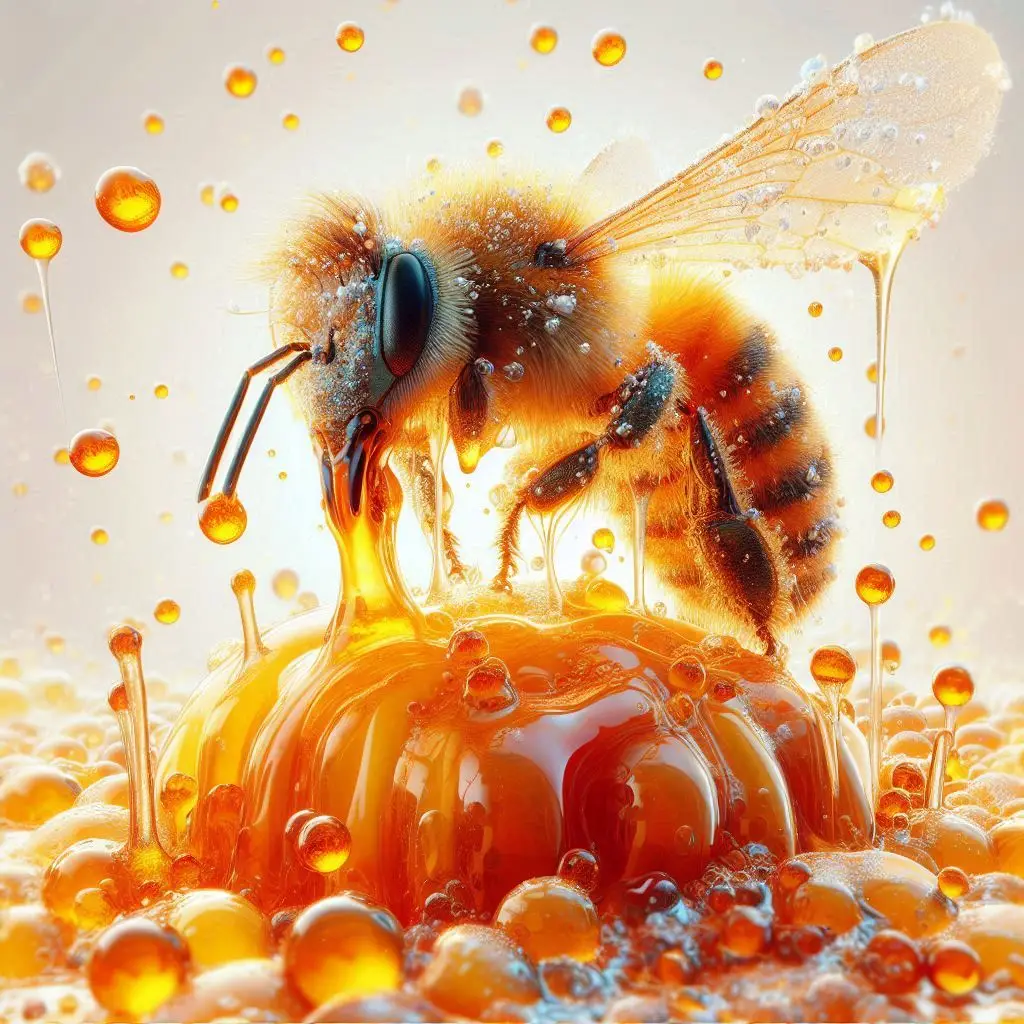
Is honey bee vomit
In this exploration, is honey bee vomit, I explore the intriguing process of turning nectar into honey in an attempt to solve the puzzle of why honey bees seem to be regurgitating it.
The humble honey bee performs a sophisticated and intriguing procedure that results in honey, the golden elixir that has been sought after by civilizations for generations. The bees' retort of nectar is a seemingly strange yet fundamental part of this process. Sometimes called "bee vomit," this action is an essential part of the process of making honey.
The transformation of nectar into honey is evidence of the extraordinary biology and social structure of honey bees. The name "bee vomit" sounds awful, but it doesn't reflect the complex processes that turn nectar into a delicious, nutrient-dense fluid. In addition to being a gastronomic wonder, the production of honey performs an essential ecological function by pollinating plants and sustaining their existence. The next time you take a mouthful of honey, remember the amazing trip it had to go from a flower's heart to a beehive, where the work of countless honey bees converted nectar into the liquid gold we treasure.
Not only is the transition from nectar to honey a biological wonder, but it also highlights the significance of honey bees for the environment, culture, and ecology. The elaborate tapestry woven by these extraordinary insects is highlighted by the combined efforts of individual bees, the sophisticated communication inside the hive, and the cultural value of honey. While we enjoy the delicious taste of honey, let's not forget the significant contribution that the common honey bee makes to our food chains, natural environments, and cultural legacy. Not only a byproduct of bee vomit, the golden elixir in our jars is a tribute to the complex dance of life inside a beehive.
The Gathering of Nectar: The expedition starts with worker bees that are out foraging and have specific probosci to let them drink nectar from blossoms. Honey is made from nectar, a sweet liquid that plants release to attract pollinators. Bees carefully gather nectar from a wide range of flowers, each of which adds a distinct taste to the finished honey. Since bees aid in pollination while foraging, this collecting process is an essential ecological function that supports plant reproduction.
Honey Bee Digestion: The forager bee gives the nectar it has gathered to a house bee when it gets back to the hive. The house bee starts the enzymatic digestion process inside the hive by consuming the nectar. Complex carbohydrates in the nectar are broken down into simpler sugars like glucose and fructose by the bee's digestive enzymes. One of the most important steps in preparing the nectar for long-term preservation is this transition.
After the enzymatic change is finished, the house bee regurgitates the altered nectar into a hive cell. This process is known as honey transformation. This regurgitated material contains a combination of partly digested carbohydrates and enzymes, not only nectar. Worker bees continue this transformation process by using their wings to fan the regurgitated nectar, which speeds up the evaporation of water and thickens the liquid. What is left behind is what we know as honey.
The Mystery of Bee Vomit: Although the phrase "bee vomit" may not seem pleasant, it is important to realize that there is more to this process than just regurgitation. Raw nectar becomes a stable, delectable material via complex interactions between enzymes, digestion, and hive dynamics. Even while the word "vomit" would indicate anything bad, it emphasizes how transformational the process is rather than suggesting any impurity.
Nutritional Value of Honey: Honey is a nutrient-rich food source that serves as more than simply a sweetener. There are additional health advantages from the enzymatic activity involved in the honey-making process. Due to its antibacterial qualities, honey has long been used as a treatment for infections and wounds. The various floral sources of nectar give rise to distinct tastes and perhaps medicinal qualities in various varieties of honey.
The Dance of the Bees: The conversion of nectar to honey is influenced by hive dynamics in addition to physiological factors. The waggle dance is a sophisticated dancing system used by bees to exchange messages with one another. This complex dance gives clues about where abundant nectar supplies are found. A forager uses the waggle dance to signal the distance, direction, and quality of the nectar discovery when it gets back to the hive. By deciphering this dance, other worker bees may modify their foraging strategies to optimize resource usage for the benefit of the colony.
The atmosphere within the hive is carefully controlled to promote the production of honey. Collaboratively, worker bees maintain the ideal hive temperature and humidity, which fosters the ideal environment for nectar conversion to honey. This collaborative endeavor transforms the hive into a living, throbbing superorganism, showcasing the amazing social organization and communication abilities of honey bees.
Cultural Significance of Honey: Throughout human history, honey has had significant cultural and symbolic meanings. Honey has been valued for its sweetness, therapeutic benefits, and even its alleged supernatural attributes throughout history. Honey was used for embalming and presented to the gods in ancient Egypt. According to Greek mythology, honey was thought to be the nectar of the gods, giving its consumers immortality. Honey's significance is seen in many religious and cultural customs, highlighting its standing as a priceless and precious material.
Bees are important to the environment because they produce honey, which is beneficial to people and helps to preserve biodiversity. As pollinators, bees help blooming plants reproduce, which keeps a variety of habitats alive. Recent bee population declines have sparked worries about possible effects on natural ecosystems and agriculture. The complexity of the honey-making process can be better understood, which highlights how crucial bee population preservation is to the well-being of our ecosystems.
https://www.novintrades.com/products/6?title=honey

